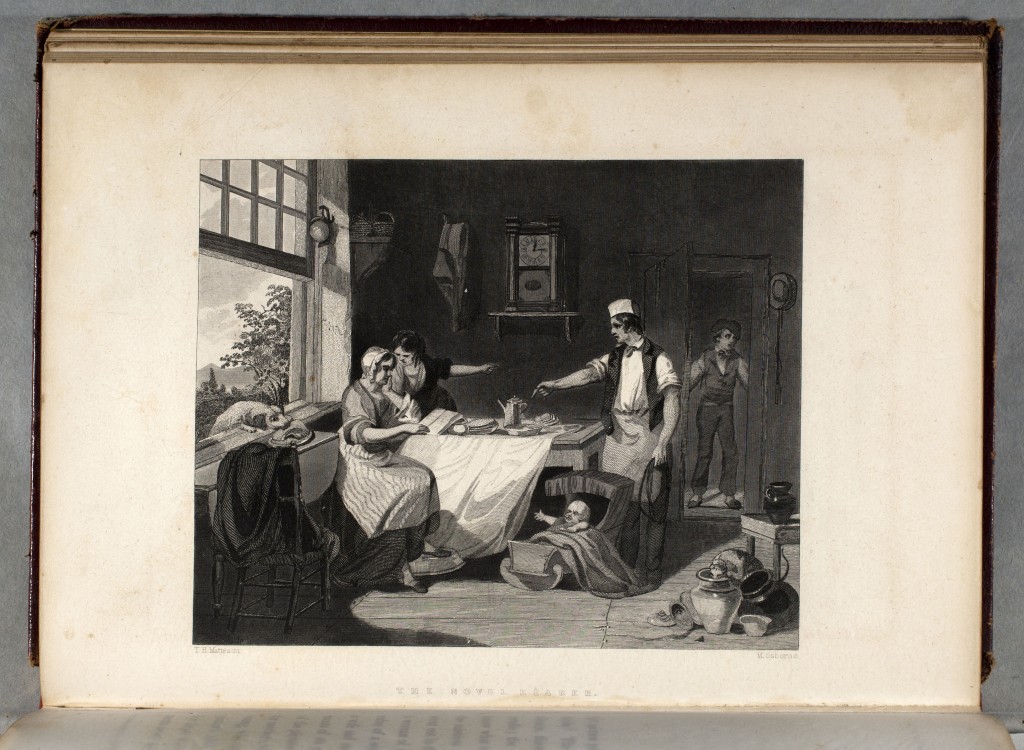
This image above of a woman reading in a busy interior, surrounded by household chaos appears in two gift books in the Society’s large collection, one from 1849 and one from 1853. The main figure sits completely engrossed in her book while the baby cries and a cat and a dog steal food. A tradesman demands payment and the lunch dishes are still on the table at 3:00. The illustration is a visual treatise on the dangers of novel reading. One does not even need to read the accompanying two page text to get the point that the editor of this particular annual was against novels for women. He describes the young woman as a figure of “ill-regulated mind, who has no appreciation of the value of a well-ordered household, or for the sacred duties of a wife and mother, and who delights only in the false excitement of an over-fed and pampered imagination.” Perhaps the young housewife is engrossed in a title such as The Monks of Monk-Hall: A Romance of Philadelphia Life, Mystery, and Crime (published in 1845) or Hen-Pecked Husband, a Novel (published in 1848). These sound so much more compelling than your standard religious text, volume on housekeeping or cookery or other wholesome books with titles like Sketch of my Friend’s Family: Intended to Suggest Some Practical Hints on Religion and Domestic Manners (1848) or Sayings and Doings; or Proverbs and Practice (1849). Ho hum. Given the choice, I’d rather read a novel, too.
AAS has many texts on the dangers of reading novels, including an essay by a minister published in 1853 entitled, Pernicious Fiction: or, The Tendencies and Results of Indiscriminate Novel Reading. Novels were seen as a distraction from the moral seriousness of life, a waste of time when young women could be industriously improving themselves or their households. Fortunately for all of us who wasted hours this summer reading novels (myself included), the nineteenth-century naysayers were defeated by the overwhelming popularity of the novel which continues even today.
As I was preparing to blog about this image, which was revealed during our current Prints in the Parlor cataloging project, a series of events transpired here under the dome, which, while not unusual, did give me pause. The volume with the image was actually being photographed this morning and was removed from the office of our digitizer so I could quote from the text. As I was transcribing the quote above a reader approached the reference desk. He is working on a film about the history of dogs in domestic spaces and he handed me a call slip for the “The Novel Reader” image. Three people needing to access the same image (myself, the digitizer, and the reader) at nearly the same moment is a bit wondrous – perhaps I should write a novel about it!
